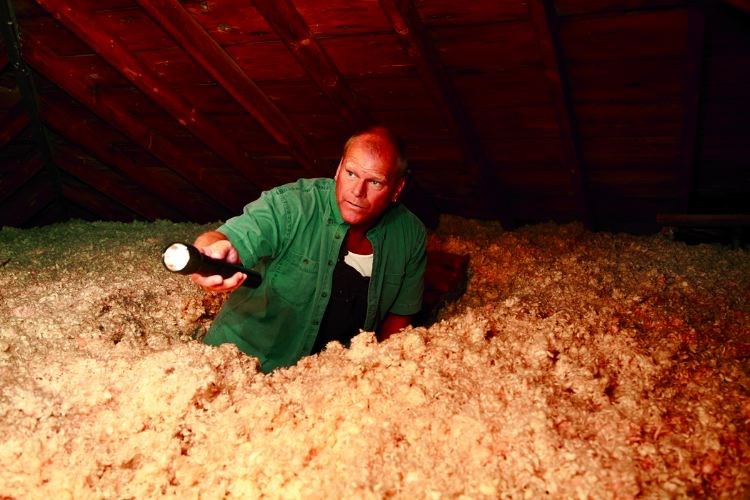Postmedia News
I've been getting a few emails lately from homeowners asking about R-value. What is it? What does it mean? How much do I need? How much is too much?
How much is too little? I'm going to try and clear this up for everyone.
When we talk about R-value - usually insulation - we're talking about a material's ability to resist heat flow. The R-value of any material measures how well a material resists the transfer of heat if the temperature on one side of it is higher than on the other side. The higher the R-value, the better the material insulates.
Most people think R-value is important because it keeps our homes warm in the winter. But it's getting warmer now, so should we forget about it until the fall?
Well, that depends. How warm does your house get in the summer?
Just as insulation's R-value protects our homes from heat loss in the winter, it also protects it from cool loss in the summer, and we can't go losing our cool.
We need to make sure our homes are properly insulated, so they can retain the cooler temperatures inside, and keep the heat outside. If not, our air conditioners will work overtime, which isn't good for the environment.. or the wallet.
So what kind of insulation gives you the best R-value? I wish there were a clear answer, but there are a lot of things that affect a material's R-value. Number one is the thickness and density of the material. But this, of course, changes all the time, for every single job.
For example, batt insulation (which is one of the more standard insulation materials in residential
construction) usually has a rating of 2.5 to 3.5 per inch.
Multiply that by the number of inches your contractor will be installing, and you'll get the total R-value of whatever is being insulated, whether it be a wall, floor, roof, or attic.
Does thicker mean better? Again, it depends on the specific material and brand your contractor is using, and how that material is applied. Let's look at batt
insulation again.
Batt insulation is usually made from fibreglass or mineral wool. Within it, there's also a lot of trapped air. This air actually adds to the insulation's R-value; it plays a huge role in the overall effectiveness of the insulation. That means that, if batt insulation is
compressed, its R-value is going to decrease.
That's why you never want to stuff as much batt insulation as you can into a wall. By crushing or pressing it, you damage it. And that means you're wasting your money.
Here's another question I hear all the time: Can you have too much insulation? The answer is 'yes,'
especially in the attic.
Loose fill or blown-in insulation has an R-value of about R3 to 4 per inch, around the same level as batt insulation. It's what most contactors use to insulate attics, and it's crucial that a professional installs it. Why?
Because non-experts tend to randomly fill in the attic space, covering the soffit vents and cutting off the
ventilation in the attic.
Or some pile it so high, it fills the entire space, not allowing for air movement. If there's no airflow in the attic, we've got big problems. This will lead to ice dams on your roof and downspouts, which will start to damage your roof. So more is definitely not better.
R-value is a helpful indicator, but it doesn't tell you everything. For starters, R-value performance tests assume there's no air movement. What does that mean?
No matter how high a wall's R-value, if you don't protect it properly against drafts, the R-value has no value.
Moisture also has a huge impact on R-value. Even a small amount of moisture can significantly reduce a material's R-value, making it about a quarter as effective as it should be. Most insulation has to stay dry. If moisture gets in it, it will compress the material, and we know that's not good.
If R-value is what you're looking for, closed-cell spray foam is king. Roughly, it has an R6 per inch rating and it creates a complete thermal break in the building envelope. It covers everything, so there's no chance for cold spots or air movement, voids, or sagging (leaving some areas exposed), as you'd get from something like batt insulation.
Rigid insulation also has a rating of about R5 to 6 per inch, like spray foam. If you're insulating a basement, this is the product you want to use for the floors and walls. It's strong, gives us a thermal break, and it isn't organic. So not only does it eliminate condensation that leads to mould, it's also not a food source for mould. That's smart.
Every home renovation or construction will, or should, have different R-value targets if insulation is going to be used. And these will be different in different areas of the home. For example, you may want a total of R60 in the attic, but R28 for a living-room wall.
I like spray foam, because of the R-value and the complete seal against air leakage. It's a bit tough on the budget, but it's a great investment in the long run, because of the energy savings. And these days, every bit counts.
Catch Mike in his new series, Holmes Inspection, airing Thursdays at 8 p.m. ET/PT on HGTV. For more information, visit www.hgtv.ca. For more information on home renovations, visit makeitright.ca.



